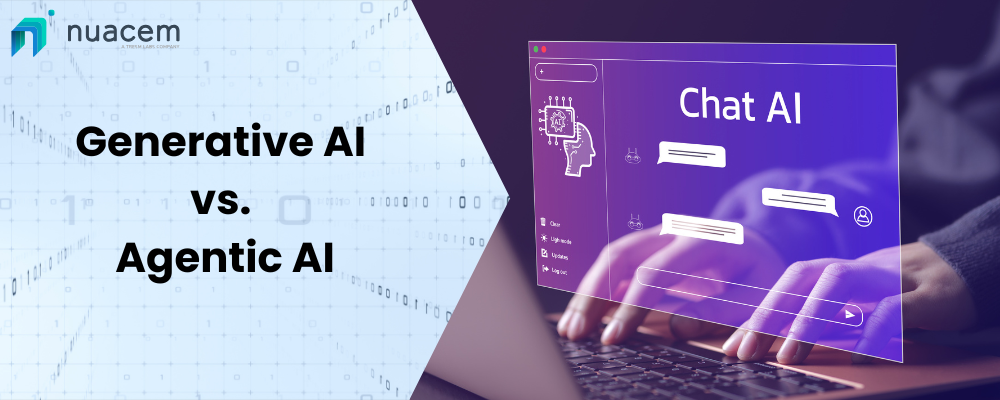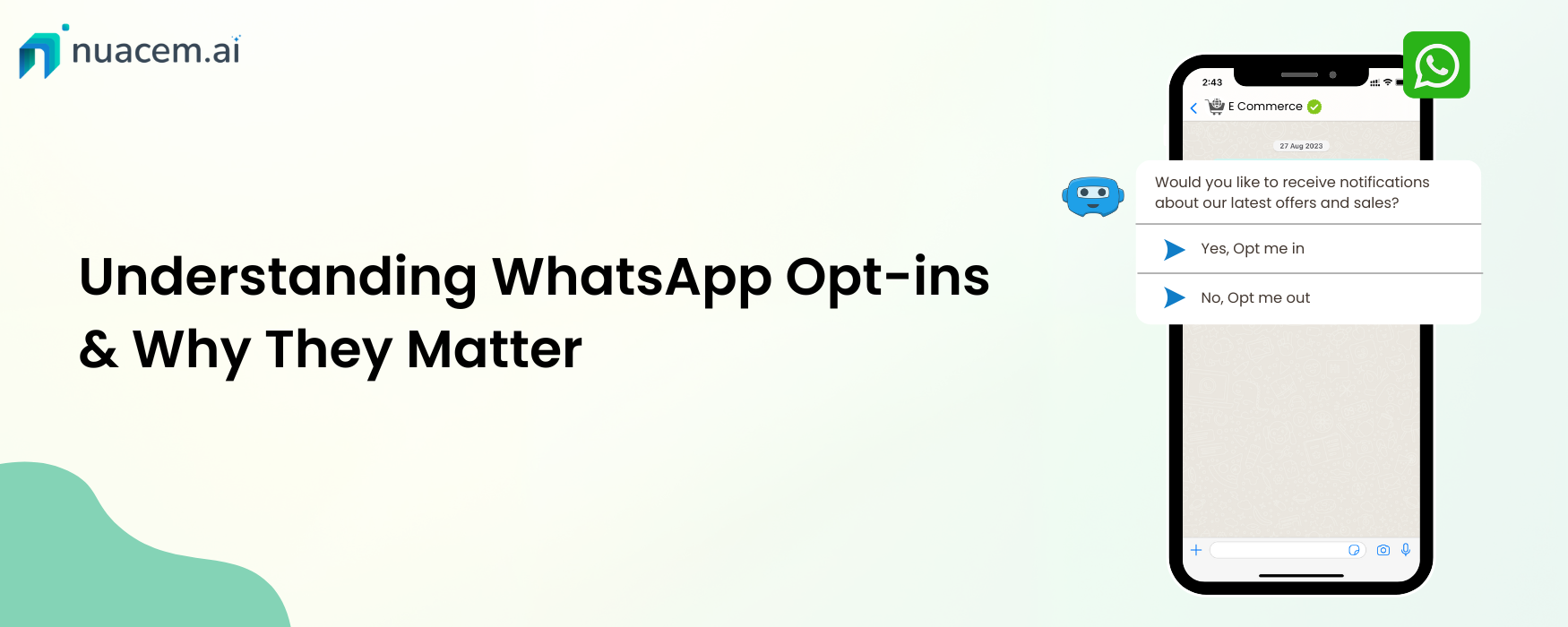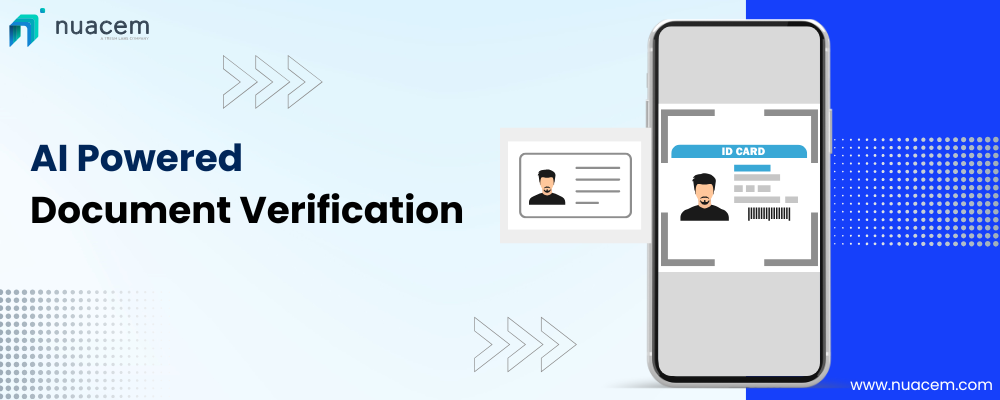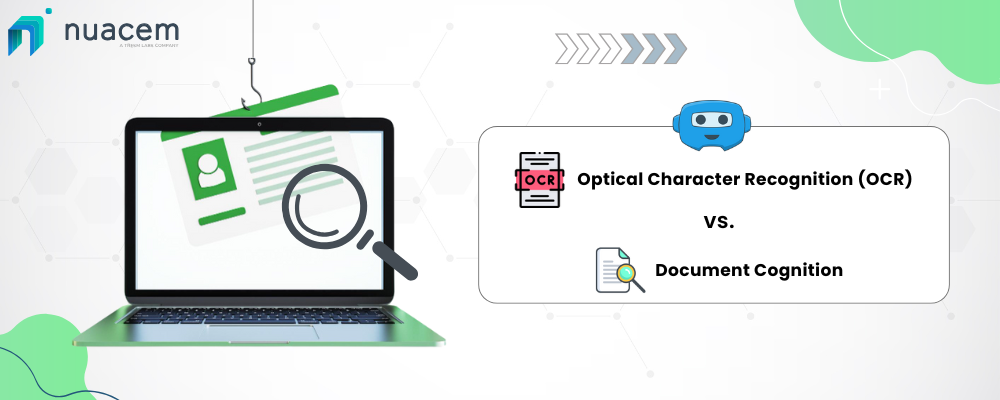Introduction
Artificial Intelligence (AI) transforms how businesses and consumers interact with technology. While AI is often seen as a singular force, it consists of various specialized branches with distinct capabilities and applications. Two of the most prominent AI advancements today are Generative AI and Agentic AI. Understanding their differences is crucial for businesses looking to leverage AI effectively.
At Nuacem AI, we specialize in Conversational AI-powered customer engagement solutions, helping enterprises amplify customer experiences across text, voice, and video channels. As we explore Generative AI and Agentic AI, we will also highlight how these technologies can redefine customer interactions.
Generative AI: The Creative Powerhouse
Generative AI is designed to create new content. It learns from existing data and uses that knowledge to generate text, images, music, videos, and even code. Tools like ChatGPT exemplify this capability by producing human-like responses, artwork, and innovative ideas.
How Generative AI Works:
- It analyzes vast amounts of training data.
- It identifies patterns and structures within the data.
- It generates outputs that mimic the learned patterns.
Benefits of Generative AI:
- Automates content creation for marketing and branding.
- Enhances customer engagement with personalized responses.
- Drives innovation in industries like media, e-commerce, and design.
Limitations of Generative AI:
- Output quality depends on the quality of training data.
- Lacks real-time adaptability and decision-making capabilities.
- It can generate biased or inaccurate responses if trained on flawed data.
Agentic AI: The Autonomous Problem-Solver
Agentic AI is built to act autonomously, making decisions to achieve specific goals. Unlike Generative AI, which focuses on content creation, Agentic AI interacts with environments, processes real-time data, and executes tasks.
How Agentic AI Works:
- It perceives its environment through sensors or data inputs.
- It processes information and evaluates possible actions.
- It makes decisions and executes them autonomously.
Benefits of Agentic AI:
- Powers autonomous systems like self-driving cars and smart assistants.
- Streamlines business operations with automation.
- Adapts dynamically to real-world scenarios, improving efficiency.
Limitations of Agentic AI:
- Requires extensive data and real-time processing capabilities.
- Raises ethical concerns around accountability and decision-making.
- It needs clear rules and objectives to align with human values.
Generative AI vs. Agentic AI: The Key Differences
| Feature | Generative AI | Agentic AI |
| Primary Function | Creates content | Takes action & makes decisions |
| Adaptability | Limited, based on training data | Highly adaptive, responds to real-time input |
| Decision-Making | Predicts patterns, lacks real-world awareness | Makes autonomous choices based on objectives |
| Application Areas | Content creation, chatbots, art, music | Autonomous driving, robotics, smart assistants |
Where Generative and Agentic AI Intersect
Generative AI and Agentic AI are not mutually exclusive; they often complement each other. For instance:
- A Conversational AI agent (Agentic AI) can use Generative AI to craft personalized responses in real-time.
- A robot chef may use Generative AI to create new recipes while using Agentic AI to cook meals autonomously.
- Customer service chatbots powered by Nuacem AI can use Generative AI for content generation while leveraging Agentic AI for decision-making and workflow automation.
Why Understanding These Differences Matters for Businesses
For enterprises, selecting the right AI technology is crucial for maximizing efficiency and customer satisfaction.
- Generative AI is the ideal solution for content-driven interactions, such as marketing, automated customer responses, and personalized recommendations.
- Agentic AI is the better choice for task-driven automation, such as intelligent customer support, workflow automation, and self-service capabilities.
At Nuacem AI, we leverage the power of both Generative AI and Agentic AI to deliver unparalleled conversational experiences. Our intelligent CX technology solutions enable businesses to provide seamless and automated customer interactions across text, voice, and video channels.
The Future of AI: Blending Generative and Agentic Intelligence
The boundaries between Generative AI and Agentic AI are gradually blurring as advancements integrate creativity with autonomy. The future promises AI systems that not only generate ideas but also act on them, transforming industries such as healthcare, finance, and retail.
Ethical Considerations:
Establishing accountability frameworks for autonomous AI.
Ensuring AI-generated content aligns with factual accuracy.
Defining boundaries for AI decision-making to safeguard human interests.
Conclusion:
Understanding the differences between Generative AI and Agentic AI empowers businesses to make informed AI adoption decisions. Leveraging AI effectively, whether for content generation or autonomous decision-making, is the key to staying ahead in a rapidly evolving digital landscape.
At Nuacem AI, we specialize in Conversational AI that seamlessly blends Generative and Agentic AI, enabling enterprises to automate, enhance, and personalize customer interactions like never before. Connect with us today to explore how our AI-powered customer engagement platform can revolutionize your business!






